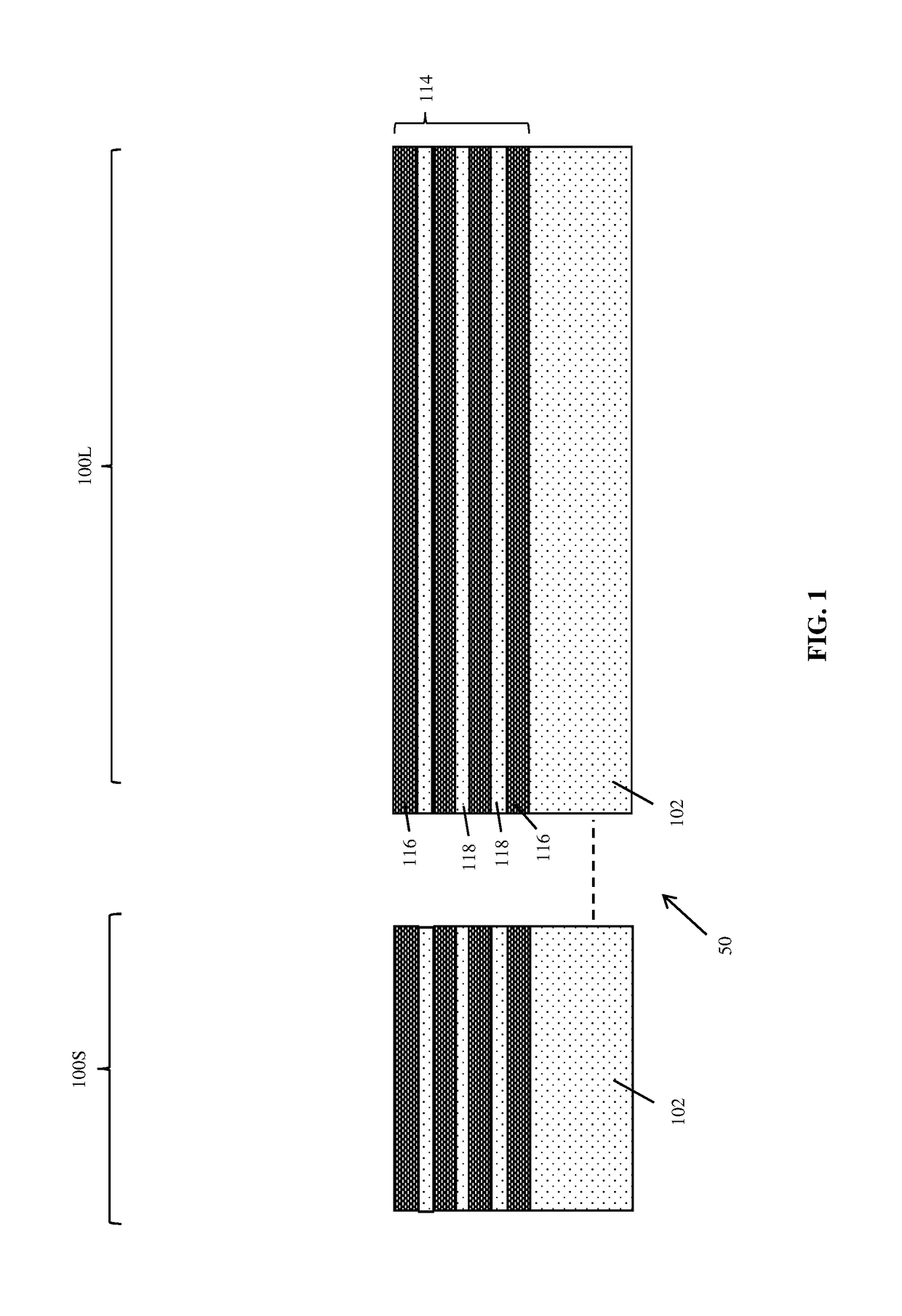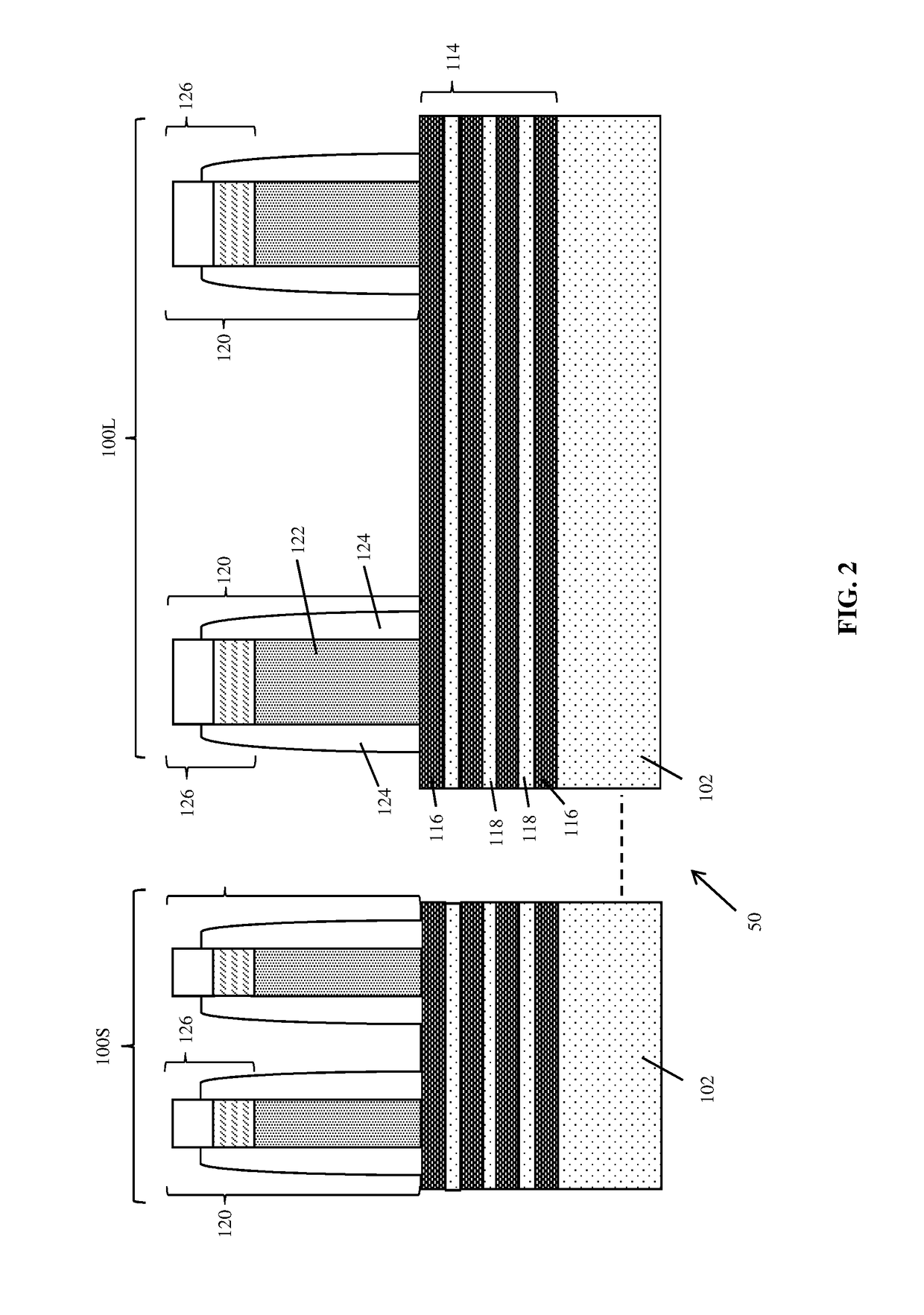Methods of forming nanosheet transistor with dielectric isolation of source-drain regions and related structure
- Summary
- Abstract
- Description
- Claims
- Application Information
AI Technical Summary
Benefits of technology
Problems solved by technology
Method used
Image
Examples
Embodiment Construction
[0035]The present disclosure relates to integrated circuit (IC) design, and more particularly to IC structures which include (“nanosheet transistors”) using bottom dielectric isolation of the source and drain contacts, and methods of forming the same. Specifically, the present disclosure provides for various IC structures with insulative dielectric materials physically and electrically separating source and drain contacts from the substrate, and methods of forming the same. In a nanosheet transistor structure, electrical connection with the various nanosheets in a gate region acting as transistor channel may be provided through a semiconductive source / drain epitaxial region grown from the edges of the semiconductor nanosheets. The source / drain epitaxial regions formed in embodiments of the present disclosure may be positioned over dielectric material formed for processing consistency in multiple regions, and to provide physical and electrical separation from the substrate. The vario...
PUM
 Login to View More
Login to View More Abstract
Description
Claims
Application Information
 Login to View More
Login to View More - R&D
- Intellectual Property
- Life Sciences
- Materials
- Tech Scout
- Unparalleled Data Quality
- Higher Quality Content
- 60% Fewer Hallucinations
Browse by: Latest US Patents, China's latest patents, Technical Efficacy Thesaurus, Application Domain, Technology Topic, Popular Technical Reports.
© 2025 PatSnap. All rights reserved.Legal|Privacy policy|Modern Slavery Act Transparency Statement|Sitemap|About US| Contact US: help@patsnap.com



